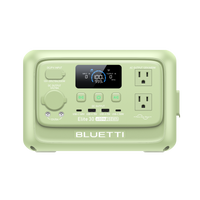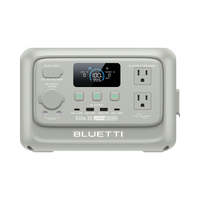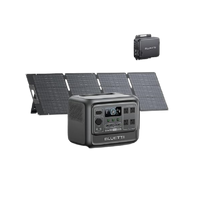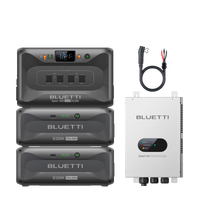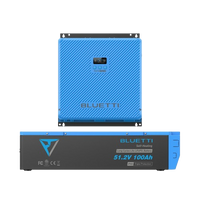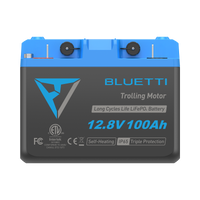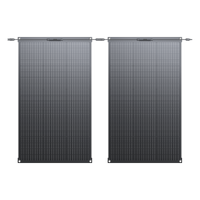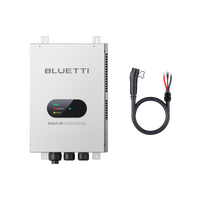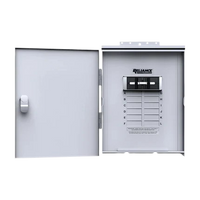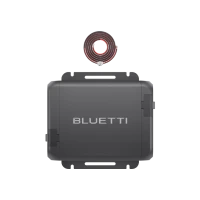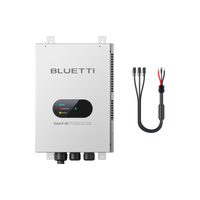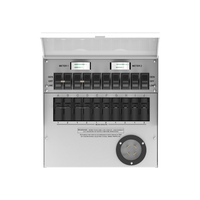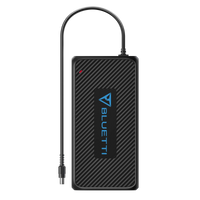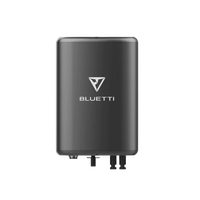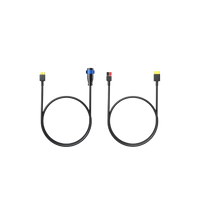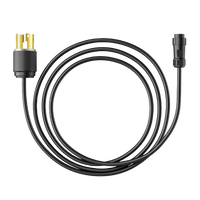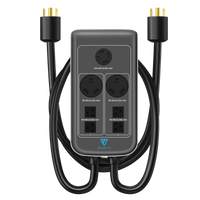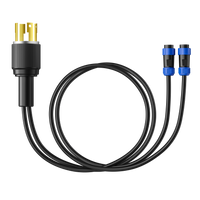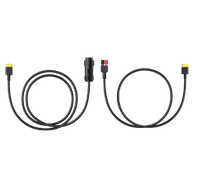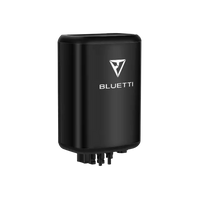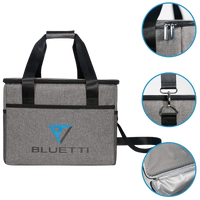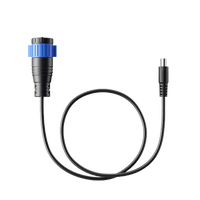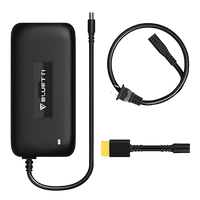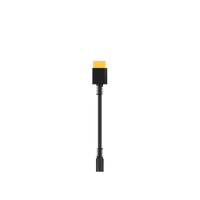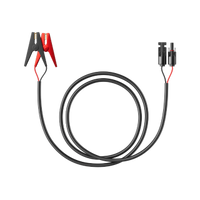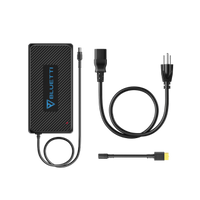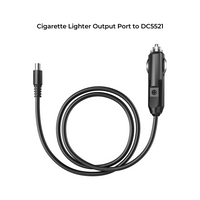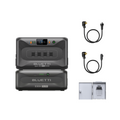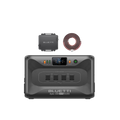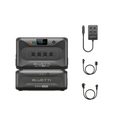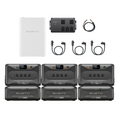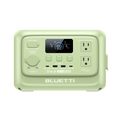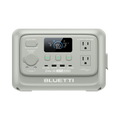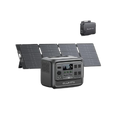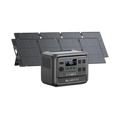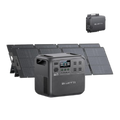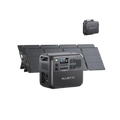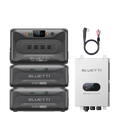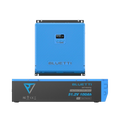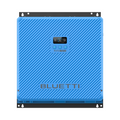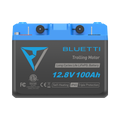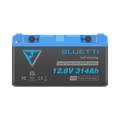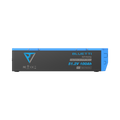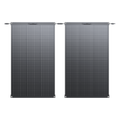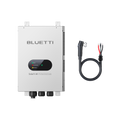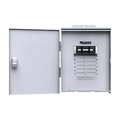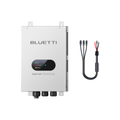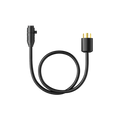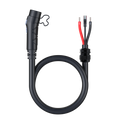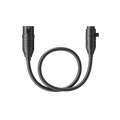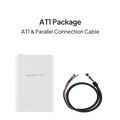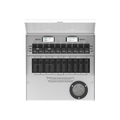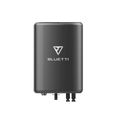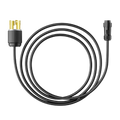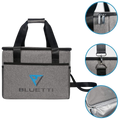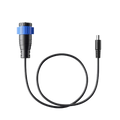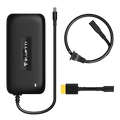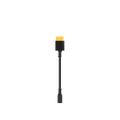Step into the electrifying world of power dynamics, where the unsung hero, the DC to AC converter or the inverter, takes the spotlight. This game-changer dances across industries, from propelling electric vehicles to harnessing solar energy. Picture this: DC power shape-shifting into its dynamic counterpart, AC power, thanks to the converter's wizardry. Its chameleon-like adaptability ensures it graces an array of scenarios, making it an unsung champion in our daily power play. Let's unravel the magic behind the DC to AC converter and decode why it's the backstage VIP in modern electrical theatrics.
What's the Mechanism Behind DC?
Picture Direct Current (DC) as the stoic hero of the electrical realm, the unwavering guardian of stable voltage. Its realm? Think mobile phones and TVs. Take your USB charger, for instance – the epitome of DC power's constancy, offering a rock-solid power stream for your gadget juicing needs. DC's defining trait? A one-way ticket for its current, steadfastly cruising from positive to negative. This unswerving journey sets DC apart from its spirited counterpart, Alternating Current (AC). Delving into DC's intricacies is the key to unraveling the enigma of the DC to AC converter and its pivotal role in our power symphony.
How Does AC Operate?
In the dynamic realm of Alternating Current (AC), the current gracefully pirouettes between two directions, giving it the rhythmic moniker. Unlike its steadfast counterpart, Direct Current (DC), which follows a one-way street from positive to negative, AC is the dance partner constantly swapping moves between positive and negative terminals. This fluidity positions AC as the star, the primary electricity form cascading into your abode or workplace straight from the electric power grid.
What Sets DC and AC Apart?
These two power protagonists may share the stage of electric charge flow, yet their tales unfold with striking distinctions.
DC, the unwavering crusader, charts a singular course from positive to negative, courting favor in our everyday electronic companions. Picture mobile phones and TVs reveling in the steady dance of DC. But beware, DC falters on the long-distance voyage, succumbing to the siren call of power loss.
Meanwhile, AC, the maestro of change, orchestrates a rhythmic ballet, swaying its charge direction like a pendulum. Its frequency, a harmonious 50 to 60 Hz, serenades the world, thanks to transformers that effortlessly tweak its voltage. AC, the globe-trotter, sails over vast distances, shedding minimal energy during transmission. Yet, upon reaching its destination, it humbly reverts to a more usable demeanor.
How Does The DC to AC Converter Operate?
Enter the inverter, the unsung hero orchestrating the alchemical transformation of Direct Current (DC) into the rhythmic dance of Alternating Current (AC). At the heart of this metamorphosis lies the 'H-bridge,' an electronic virtuoso deftly switching the voltage's polarity with each nod from signal inputs.
Here's the choreography:
-
DC, the steady stream from a trusty battery, waltzes toward the H-Bridge.
-
The H-Bridge, a maestro of transistors, transforms the DC beat into a symphony of oscillations, birthing the pulsating rhythm of AC.
-
Picture this: a cascade of oscillations, a dance party in the electric realm, happening hundreds or even thousands of times per second, flirting with frequencies reaching up to 70 kHz. The goal? To mimic AC power with a finesse that dazzles the observer, turning the mundane into a mesmerizing spectacle.
Why Is DC to AC Converter Necessary?
Unlocking the magic of energy transformation, the inverter takes the spotlight, seamlessly converting the stoic Direct Current (DC) into the dynamic dance of Alternating Current (AC). This metamorphosis serves as the linchpin for various energy endeavors:
In the realm of renewable energy, solar panels, the heralds of DC power, seek an alliance with the prevailing AC order. Here, the inverter takes the stage, bridging the gap and seamlessly ushering solar energy into the AC symphony.
Electric Vehicles (EVs), purveyors of DC power, navigate the landscape dominated by AC charging stations. Enter the On-board Charger, a virtuoso in the EV ensemble, gracefully translating AC power into the language of EVs – DC power for battery revival.
When the lights dim, the UPS emerges as the guardian, its DC batteries standing vigilant. Yet, to illuminate the darkness, the inverter emerges, choreographing the transition from DC to AC, ensuring a seamless performance during power outages.
Picture off-grid enthusiasts, surrounded by the serenity of remote locations, relying on DC-generated electricity. The inverter becomes the silent conductor, orchestrating the conversion to AC, allowing standard household appliances to join the off-grid symphony.
In the bustling domains of homes and offices, where AC-powered appliances reign supreme, a rebellion brews. DC power sources, from batteries to solar panels, yearn to power these behemoths. The solution? The DC to AC converter, an alchemist harmonizing the clashing notes of different power dialects, ensuring appliances hum with contentment.
Recommended Batteries For A DC to AC Converter
Navigating the realm of home battery backups, where the seamless conversion of DC to AC is the golden ticket, presents a plethora of choices. Beyond the reliability they bring during outages, these powerhouses double down by expertly metamorphosing DC to AC, catering to a spectrum of applications. Let's spotlight three standouts in this electrifying lineup:
1. BLUETTI AC200 + 2XB300 Home Battery Backup
This home battery backup system is a technological symphony boasting a 3,000W AC Pure Sine Wave Inverter, robust enough to gracefully handle surges of up to 6,000W. A testament to its resilience, this powerhouse is no small player in the field.
With a capacious 3,072Wh at its core, the system's prowess expands exponentially, reaching a staggering 12,288Wh with the infusion of 4 × B300 units. Flexibility becomes your ally as you tailor the system to match the unique contours of your power demands.
Fueling this dynamo is the LiFePO₄ Battery, a true powerhouse. With a stellar track record of over 3,500 life cycles, and retaining a commendable 80% capacity post-exploits, it stands as a testament to endurance, solidifying your investment's enduring value.
Enter the spotlight feature - the 240V Split Phase Bonding support, a maestro ensuring an unwavering 24/7 UPS Home Backup. In the face of a power outage, your abode remains a sanctuary of perpetual power, a reassuring haven.
2. BLUETTI EP500Pro Home Battery Backup

Dive into the world of the BLUETTI EP500Pro, transcending the mere realm of a portable power station to emerge as a stalwart power solution catering to diverse needs. Anchored by a robust 5100Wh LiFePO4 battery, this powerhouse boasts an impressive 3500+ cycles, retaining a formidable 80% capacity for enduring service over the years.
Capacity aside, the EP500Pro dons the mantle of quality, unleashing a 3000W pure sine wave output, a symphony of clean, stable power tailored for the most delicate electronics. With a nod to versatility, it gracefully juggles both In-grid UPS Mode and Flexible UPS Mode (24/7), ensuring an uninterrupted power ballet for your devices.
Here's the showstopper – the EP500Pro's ability to power a multitude of devices concurrently, making it the virtuoso for outdoor events, emergency backups, or any scenario demanding a simultaneous power surge.
3. BLUETTI AC500-B300S Home Battery Backup
The BLUETTI AC500-B300S is a formidable home battery backup system that transcends the ordinary. Armed with a robust 5000W power arsenal, this powerhouse gracefully surges to an impressive 10,000W, a beacon of reliable power precisely when the need arises.
Capacity becomes an expansive canvas, stretching from 3,072Wh to an astronomical 18,432Wh, positioning it as the virtuoso capable of conquering the most formidable power challenges. Embracing the 240V/10KW Split Phase System, it amplifies versatility, adding a symphony of usability to its repertoire.
A star feature emerges - multiple recharging options, a palette of six choices including AC, Solar, Car, Generator, Lead-acid Battery, and dynamic Dual Charging (AC/AC+Solar). This dance of flexibility ensures your system remains charged, a resilient companion wherever your journey takes you.
Is a DC to AC Converter Essential for Inverters?
Certainly, the DC to AC converter, fondly known as an inverter, emerges as the unsung hero in homes or businesses tethered to power banks, batteries, or solar power. Why, you ask? Well, because these power sources are fluent in the language of direct current (DC), while our trusty appliances clamor for the rhythmic beats of alternating current (AC). Enter the inverter, the maestro orchestrating the grand switcheroo, transforming DC into AC and ensuring our appliances sing the right tune. Whether you're off the grid or harnessing solar prowess, the inverter stands sentinel, making the power generated a harmonious match for your AC appliances.
Which is the Perfect DC to AC Converter?
Selecting the optimal DC to AC-converter, commonly known as an inverter, hinges on tailoring your choice to your unique needs. Are you on the hunt for a portable companion or a stalwart for home use? Do you yearn for the added fortification of battery-backup capabilities? If your endeavors tread the off-grid path, that too should weigh on your decision. Crucially, the total wattage requirement, encompassing those occasional surges, adds another layer to the decision-making tapestry. And let's not forget the sine wave, pondering between the purity of a pure sine wave inverter or the pragmatism of a modified sine wave inverter.
Final Thoughts
Embarking on a voyage through the pulsating realm of DC to AC converters, it's evident that this transformative technology serves as the backbone of our tech-infused existence. Whether illuminating homes or propelling electric vehicles, its impact reverberates. Delving into the intricacies of DC and AC, their divergence, and the pivotal role of converters unfolds as a journey into the beating heart of modern electricity. The narrative unfurls, unraveling the why and how, casting light on renewable energy integration, EV charging, uninterrupted power supply, and the allure of off-grid living. As we have navigated through recommended batteries and unveiled the secrets of finding the perfect converter, the core revelation persists: these devices transcend being mere power transformers; they emerge as enablers, eloquently translating energy for a world in perpetual motion.













